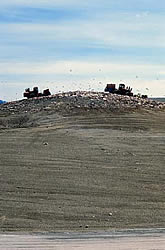Recycling carpet materials
Annually, an average of 1.6 million tons of carpet waste within the European Community result in landfills or MSWIs. It is anticipated that landfilling will be gradually restricted to ecologically friendly waste materials. Without the development of alternative systems to manage the disposal of carpet wastes, the MSWI technology will consequently become the only, although quite expensive solution. In addition, first priority will be given to material, chemical, and thermal recycling of waste within the next years as specified by the European Commission. Carpet composition comprises a number of valuable raw materials, such as polymers, natural fibres (wool), and inorganic fillers (chalk). For the post-use carpet waste a cost-effective and environmentally friendly waste management system, namely the RECAM, has been developed. It is a sustainable, closed loop system for recycling that will allow the reuse of materials (either as a material, a chemical feedstock, or as energy), the promotion of environmental protection (lower emissions and less depletion of non-renewable natural resources), and the attainment of economical and technological feasibility (long term competitiveness). The project results showed that a 30% reduction of the carpet waste management costs could be attained when the RECAM system is fully implemented. The system has also the capability of energy recovery from residual carpet material streams using alternative solid fuel supply to the process industry (mainly cement kilns and coal-fired power plants). Estimating that it would annually recycle 1 million tons of carpet waste, the fossil fuel equivalent of the average energy consumption of 100.000 households would, therefore, be preserved. The RECAM is a complete system that incorporates all the necessary steps from collection and logistics to technologies for the identification, sorting, cleaning, size reduction, separation and purification of the material components, as well as the recycling of valuable materials and energy recovery from the residual waste streams. This highly innovative technology can open new horizons for recovering products at the end of their lifecycle.







